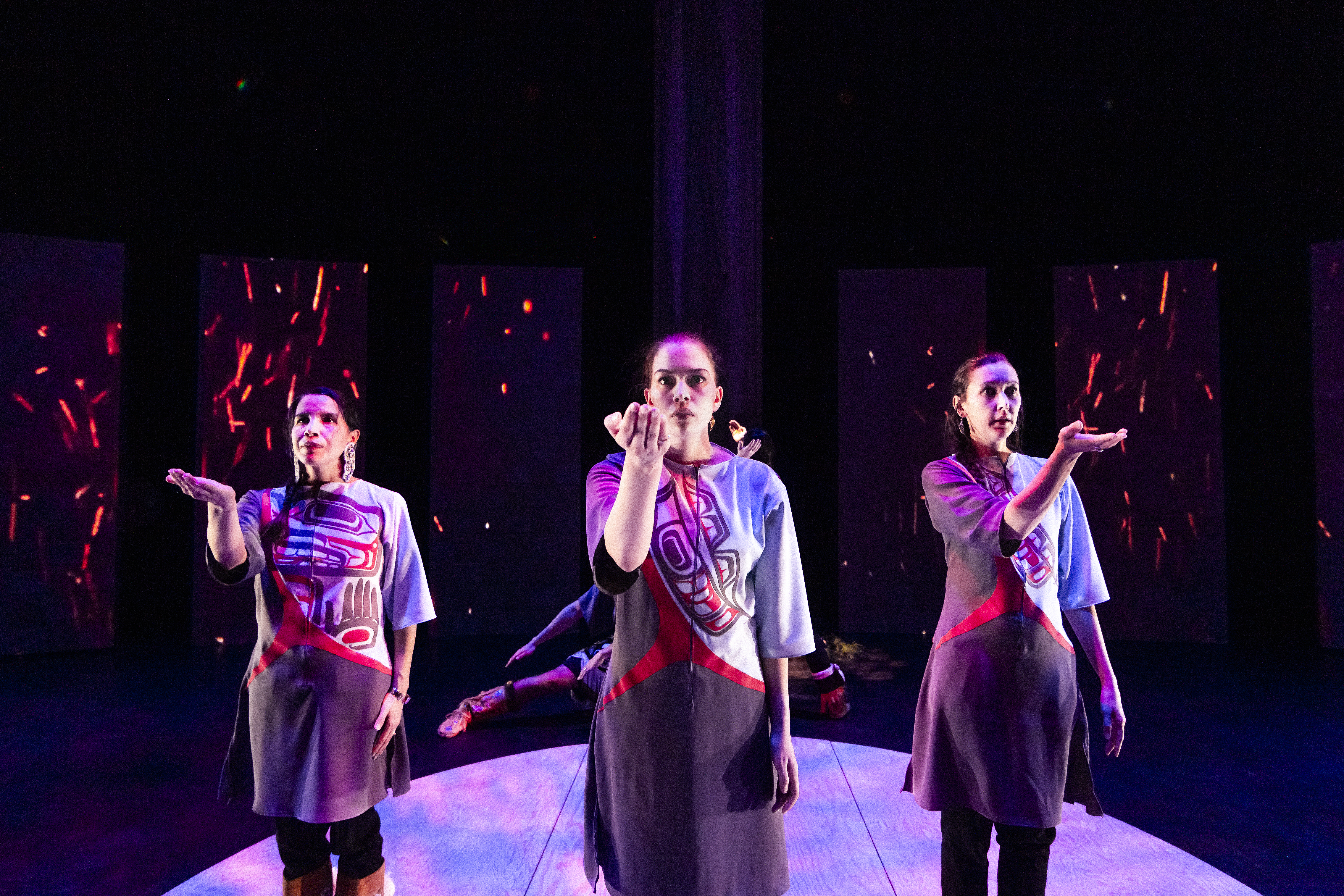
Dancers of Damelahamid are back on the Vancouver stage with their newest offering, “Mînowin.” The brand new show explores the process of recovering and re-interpreting Indigenous teachings over multiple generations, through story, dance, and music. The show’s choreographer, and Executive and Artistic Director of the dance company, Margaret Grenier, is also performing in this production.
In addition to her work with Dancers of Damelahamid, Margaret has also produced and directed the annual Coastal First Nations Dance Festival since 2008. She is a graduate of the Masters of Arts in Arts Education program at Simon Fraser University (SFU), has been a sessional instructor at the University, and has also been a faculty member for the Banff Centre Indigenous Dance Residency. In addition to all these roles, Margaret serves on the Board for The Dance Centre and the Canadian Dance Assembly.
Margaret’s Gitksan and Cree ancestry forms an integral aspect of her art and in “Mînowin” she examines her heritage under the specific lens of moving forward towards the future. We chatted with Margaret to find out more about “Mînowin,” the evolution of Dancers of Damelahamid, and the diversity and power of Indigenous dance forms.
“Mînowin” is about rebirth and transformation. Can you tell us more about these themes and what inspired you to construct a dance around them?
We have been working on “Mînowin” over the past year or so. For it we looked at the concept of Indigenous origin stories and how they are relevant to us today. We looked at how, through our own interpretations, we can go back to Indigenous teachings and move forward with them.
We looked at transformation that occurred in Indigenous communities as they navigated their way through colonial history and processed the loss that they experienced. The loss of language and ancestral knowledge has fractured communities.
Rediscovering our identities and stories is what will bring us forward. There is healing and understanding present in going back to our teachings.
How does “Mînowin” compare to “Flicker,” which was more about self-learning?
“Flicker” was about an individual journey whereas “Mînowin” is about looking at ourselves collectively. The translation of “Mînowin” is “the process of clarifying direction.” “Mînowin” is about finding a place for Indigenous teachings in the present and collectively carrying them forward to the next generation. Resiliency arises from a better sense of self and connectedness to our history and culture.
In “Mînowin,” a lot of the dances come from having been passed down from generation to generation in my family. The dances are part of the practice that I grew up with. In the first part of the piece the focus is more on the traditional style of Indigenous dance. The second part looks at bringing this traditional style into the present. This second part is a place of ceremony and looks at how we connect with clarity. The third part focuses on resiliency and affirmation of who we are as Indigenous people.
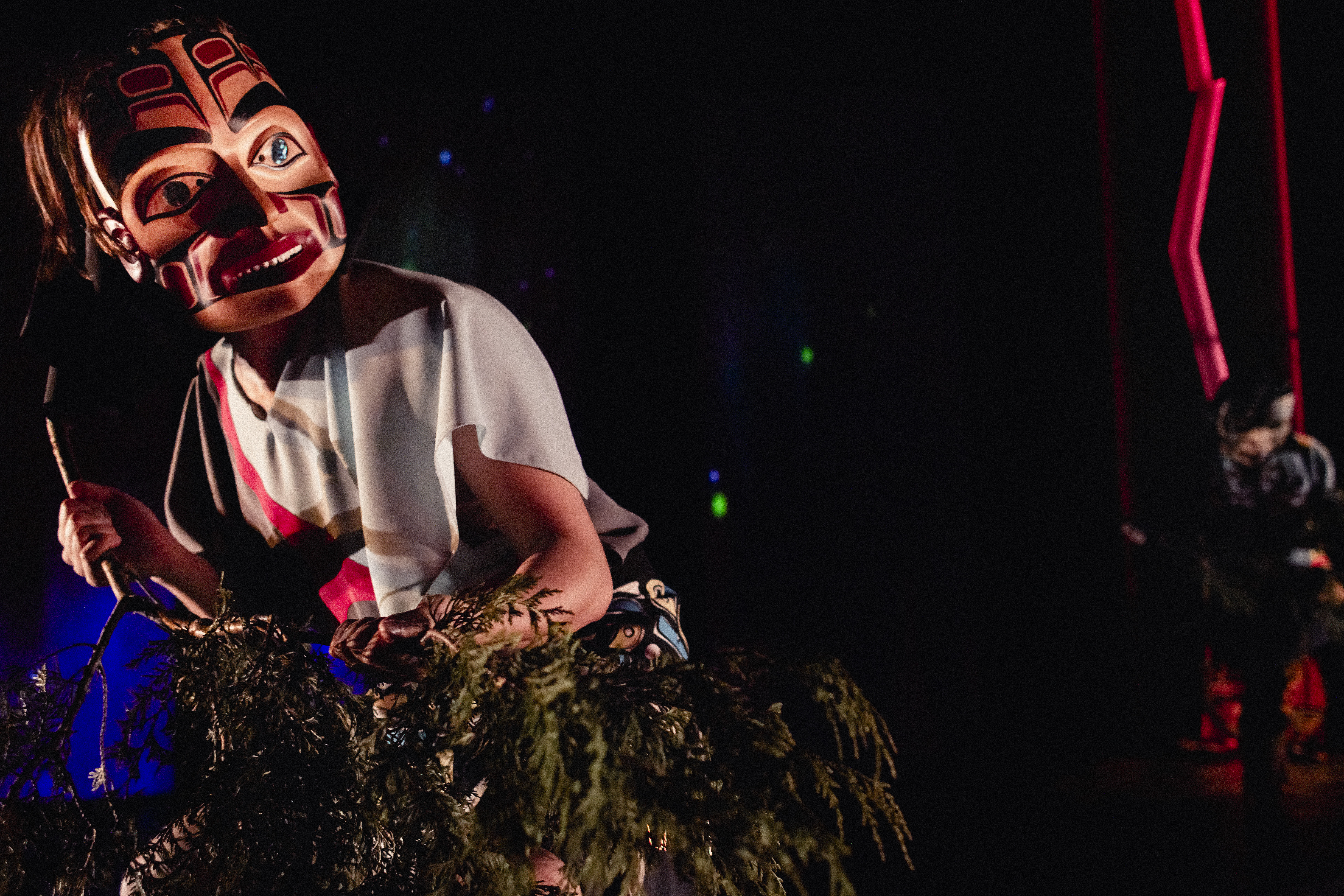
You will be performing in this show along with five other dancers. What was it like going back to performing on stage?
My son, Nigel, and my daughter Raven, are dancing in the show. Dance has always been part of our family but I’ve really seen my children stepping into themselves as young adults through “Mînowin”. It’s been a really beautiful transition. Our family itself has transformed through “Mînowin.”
We have guest dancers- Chrissy Kristy Janvier and Jeanette Kotowich. My son’s wife Rebecca is also one of the dancers. The work is about our family and shows how this practice means more to us than just a project. “Mînowin” shows the transfer of an important practice from one generation of our family to the next.
Can you tell us more about the use of different forms of multimedia used in “Mînowin”?
We worked with two media designers, Andy Moro and Sammy Chien. Andy worked on “Flicker” too. For “Mînowin” he produced beautiful work that will be projected on the screens. Sammy Chien produced interactive projections for the dance floor, which respond to the movement of the dancers in real time. We approached Sammy for one section of the dance but he ended up doing the whole show. Andy and Sammy really listened to our intentions and to the story. We were very fortunate to have them.
“Mînowin” includes Coastal Indigenous dance forms, and in a previous interview you mentioned that you have chosen to incorporate some contemporary elements to make the piece more inclusive. Was creating the fusion a difficult task or was it rewarding to add your voice to the conversation?
It felt very natural. Our intention wasn’t to classify and allocate the styles we wanted to work in. It was more to pick the forms that tell our story the best and to do what makes sense. We worked with a dramaturge, Peter Rockford Espiritu, as well as Charles Koroneho, who was the collaborative director and functioned as an outside eye that helped bring everything together and flow. “Mînowin” is a big and ambitious project for our company. We were able to produce it with the help of the National Arts Centre’s National Creation Fund. As part of this grant, we were given a few additional weeks with our collaborators. This gave us more time to work through all our ideas and to refine the work as we were exploring and challenging ourselves.
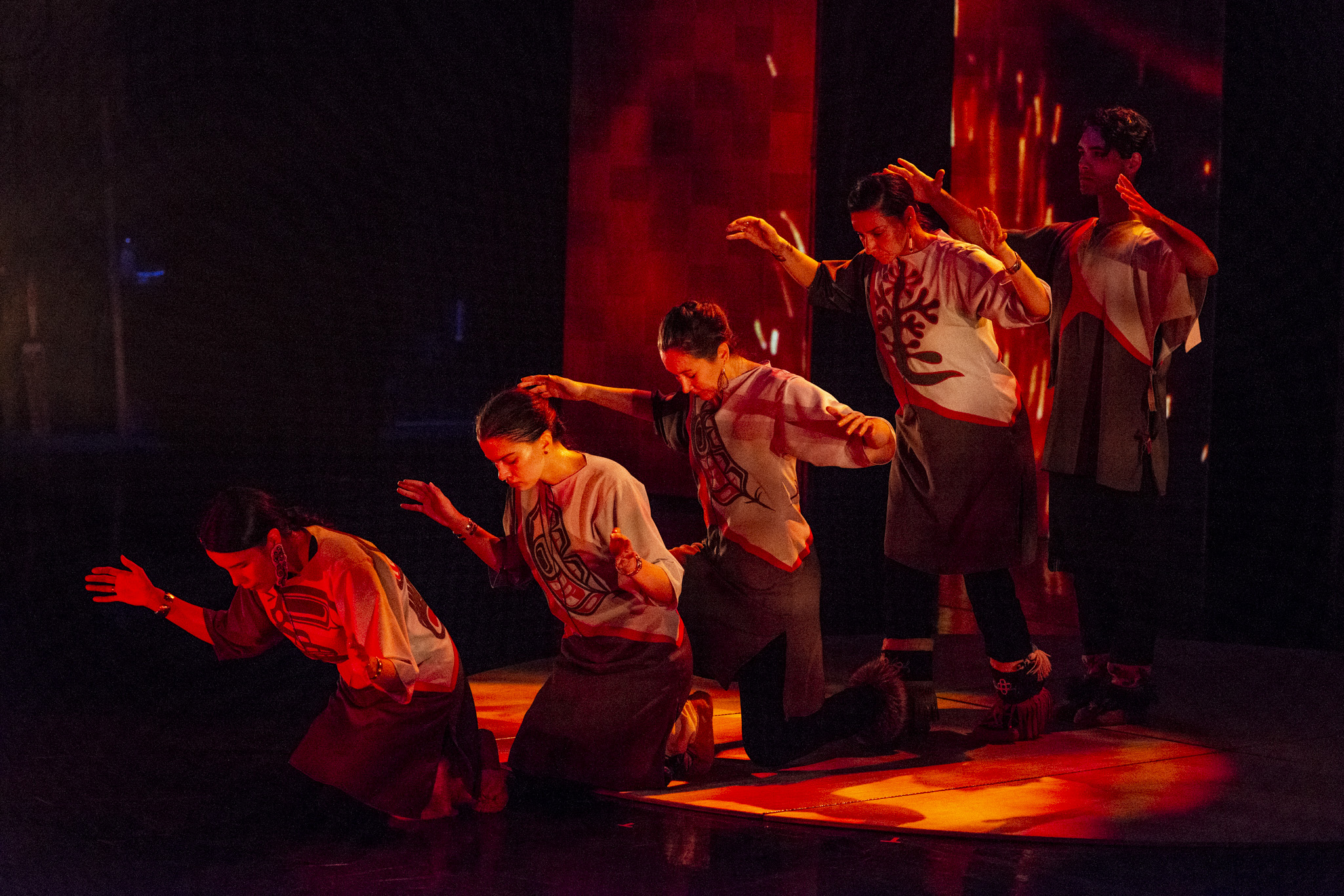
Dancers of Damelahamid have been producing work formally since 2003. How do you feel the organisation has evolved since its conception?
The company began staging formalised productions since 2003 but even before that, it had been maintaining and sharing hereditary dances. Since 2010 our company shifted a little by taking in some contemporary approaches. This was not to challenge the foundational knowledge of traditional training or anything like that. Each generation has its own journey and challenges. The role of my parents’ generation was to revitalise a dance form that was nearly lost. Ours has been to move the culture forward.
So the company has, and will keep evolving, with every generation.
“Flicker” was produced in 2016. Does the dance company prefer to develop one show at a time?
“Flicker,” and the works before it, were based on what resonated with us as a family at the time and what story we wanted to share. How we grew while making “Flicker” is what we brought to “Mînowin,” not only to the creation of the work, but also to the narratives and scenes. For us, each production builds on the last.
As the Executive and Artistic Director of the company, what is your goal for the Dancers of Damelahamid? What would you like to see the company achieve?
I feel very blessed with what has been achieved. Even five years ago, our form of dance and type of work wasn’t seen at venues like the Cultch or the National Arts Centre. It was with “Flicker” really that everything started and we got to present at venues that widely share dance. “Flicker” changed the understanding of what contemporary dance is. It showed that contemporary dance is diverse and inclusive. I feel privileged and honoured to be part of that change. I hope we continue in that direction – and not just Indigenous artists, so that dance can bring many things to the audiences. Because it’s beautiful.
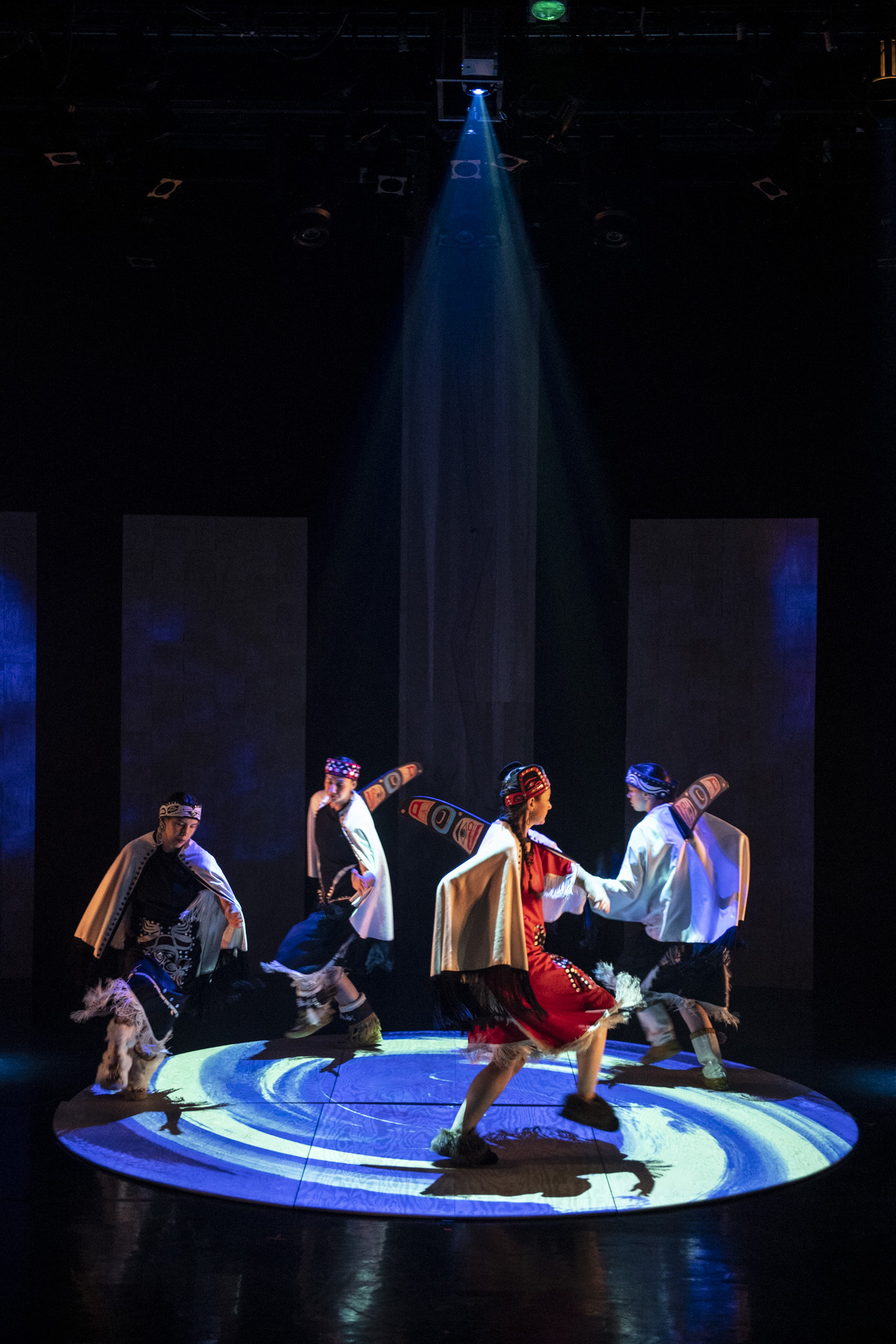
What challenges do you think Indigenous artists still face when creating work in Canada?
Even though a lot of work is happening and there is a greater understanding of the work we’re doing, I still think there are huge gaps. What we share is very specific. We share an Indigenous dance form that comes from the north-west coast. When we tour far from home, the understanding of our art form diminishes and the expectations are mismatched. This has always been a challenge.
Even though the dance itself is a platform for bridging gaps there are still misunderstandings in the way that it is received. This misunderstanding makes it that much harder for audiences to simply receive the work you are putting forward. There’s a lot to work through to even get to that place.
How can we encourage more Indigenous youth to get involved in theatre, dance, and the arts?
Access to lots of different platforms is very important. Our youth are going to connect to art in different ways. Some will be drawn to dance, some to visual arts, some to music. The more we can work in these different fields to create access for them, the more they will be interested in the arts.
I grew up in dance because of my parent’s work. At the time I didn’t fully understand the opportunity I was given but just by being immersed in it I became interested in it. I think it’s those kinds of opportunities that allow young people to be part of something and to make those connections, that help develop artistic vision in our youths.
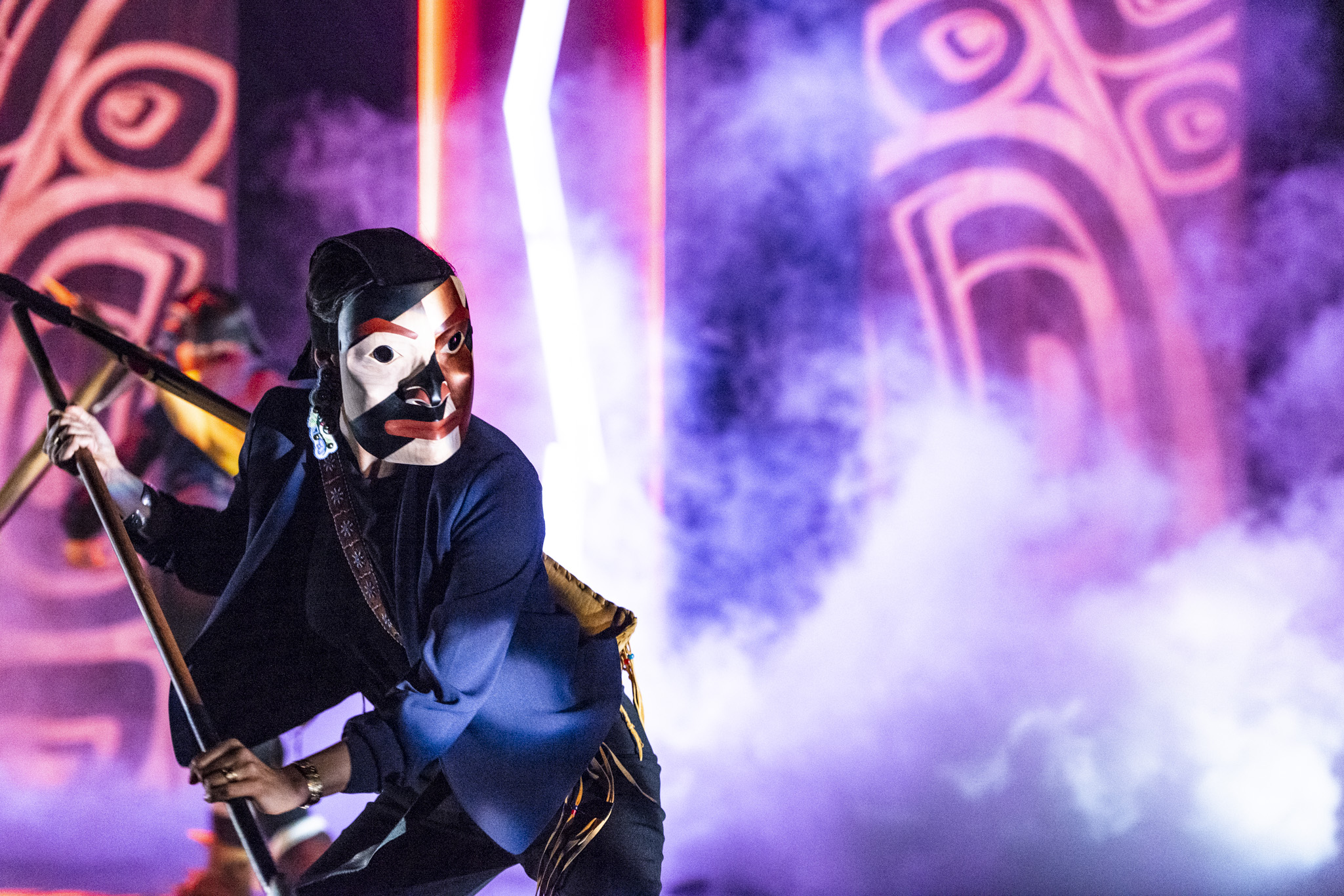
Do you think art can be a catalyst for reconciliation and how do you think that could look like?
I absolutely do think that art can affect change. It can affect people’s hearts, which is the most important thing, from my perspective. As an artist, you’re being vulnerable and sharing what is important to you- your identity and values. That has the potential to really touch people. Even if it’s not fully understood, it has an opportunity to have an impact. An honest and non-judgemental receiving of Indigenous art is a big step towards reconciliation. Art reflects our identities as Indigenous peoples and tells our stories. When Indigenous art is received without preconceived notions and our people are allowed to be their true selves is when we can get to reconciliation.
What is on the horizon for Dancers of Damelahamid and do you have any personal projects that you are working on as well?
We’ve been fully immersed in “Mînowin”. We have been touring. We went down to Cervantino, which is a big festival in Guanajuato, Mexico, and we just got back from Scotland too. I’m really happy to have come to this place because this project is so big. Our next work will be the annual festival that we host in the spring. I also have some smaller work lined up, which I think will be nice as a bit of a breather!
Get your tickets here!
– Prachi Kamble
